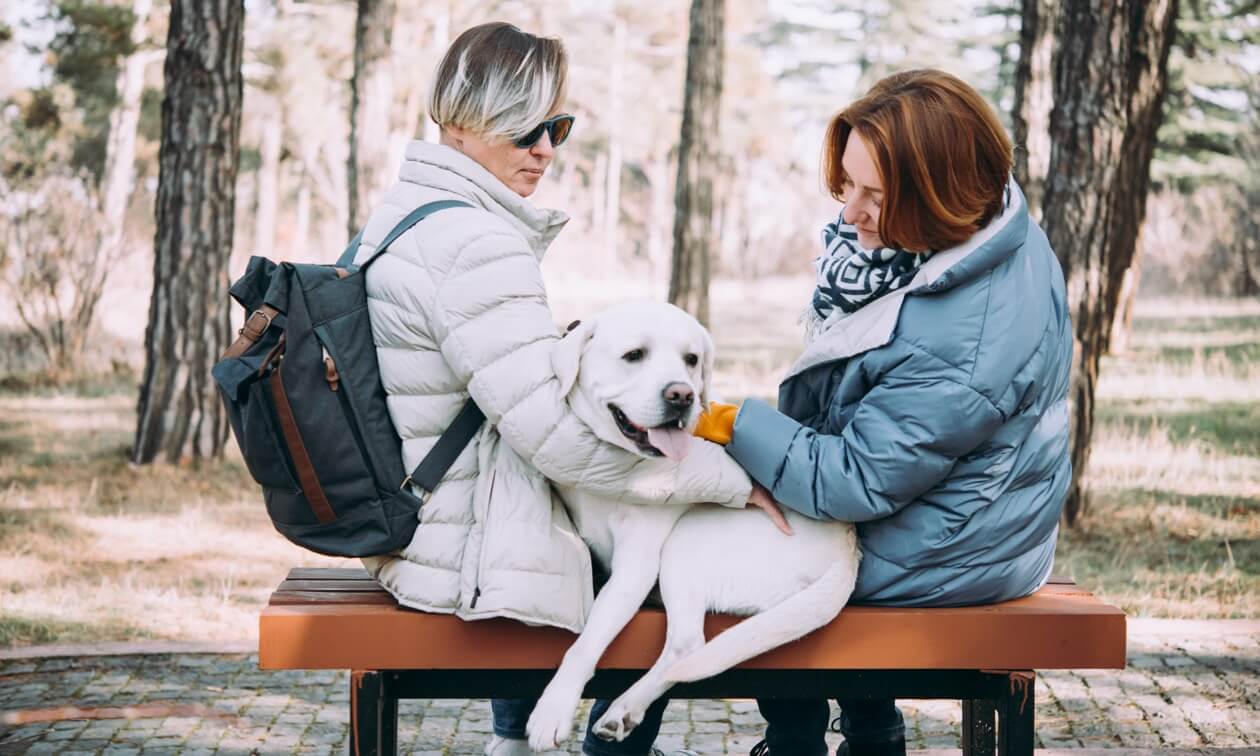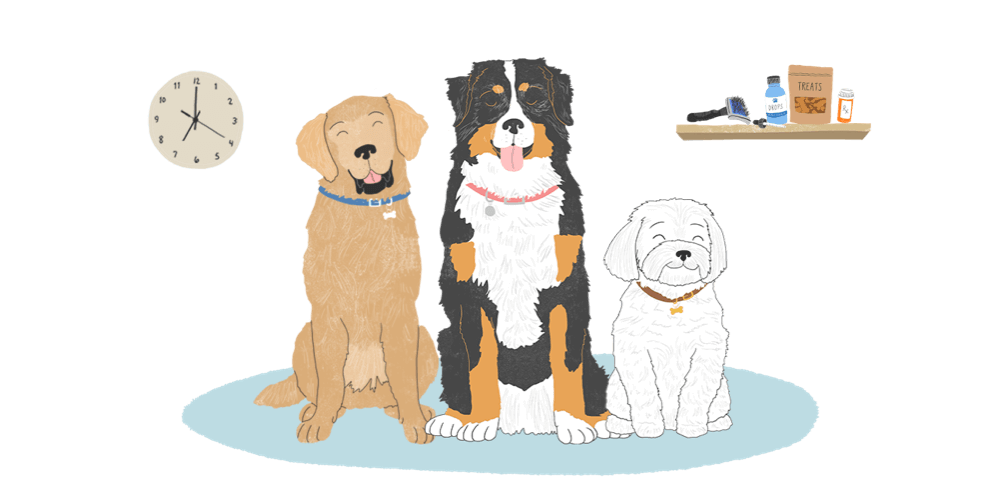Just like people, dogs can decline physically (and sometimes mentally) as they reach their golden years. You may notice your senior dog is having a harder time climbing stairs, standing up after a nap, playing, and even following commands.
Don’t let this get you down! In addition to proper medical care, you can do several physical and mental activities to keep your senior dog young at heart and feeling good. Here are a few senior dog exercises to try out. Before you try any of these exercises with your senior dog, check with your veterinarian. Depending on what is going on with your dog they may want to modify or add things to help.
Walks
Walks are a fundamental exercise routine for dogs because they:
- Help with weight control and body conditioning by burning calories
- Promote joint health by keeping the joints in motion to improve function
- Encourage digestive and urinary health by providing a regular bathroom schedule
- Contribute to emotional well-being by catering to a dog’s love for spending one-on-one time with their person(s)
- Provide mental stimulation as they use their senses and experience new things
Not only does your senior buddy benefit greatly, but you do too! Walks are great exercise.
Daily walks with your dog (not just potty breaks) are best if possible. Keeping a predictable schedule is important. If they start lagging behind or panting, try shorter walks and gradually increase the distance over time.
Balance Exercises
Balance is important to maintain strength. In any movement, stabilizer muscles act to steady one joint so the desired movement can be performed in another joint. Dogs have stabilizing muscles in their trunk and legs that need to be exercised regularly to help with balance.
One type of balance exercise you can do with your dog is the “leg lift and hold”.
- Have your dog stand on a nonslip surface. Tap on the leg you want to be lifted and hold out your hand. You might have to help bring the paw up, but do not force this.
- When lifting a front paw with one hand, use your other hand to support the elbow joint of that lifted leg. When lifting a hind paw, support the knee joint of the lifted leg. The goal is for the dog to shift all their weight onto the three legs that remain on the ground while lifting the fourth leg.
- Start by lifting and holding each leg separately for 5-10 seconds. Do a set of 2-3 holds per leg every day or two. This can be increased gradually over time to 20 seconds per leg.
- Reward with praise and/or a food treat.
Mobility Exercises
Mobility exercises help with flexibility by keeping your dog’s spine mobile, and they improve balance by giving the stabilizer muscles a workout.
One mobility exercise to try is a “cookie stretch”. These simple stretches aid with flexibility by utilizing a cookie (not an actual cookie, but a dog-safe food treat) to lure your dog into a position that stretches through their spine. Using a treat to guide your dog’s nose to different parts of the body stretches parts of the neck and spine.
- Have your dog stand comfortably with all four paws on the floor. The front and rear legs should be parallel and stable.
- Lure your dog’s nose:
- Straight up
- Up and to the side
- Toward the chest
- Toward the shoulder
- Toward the elbow
- Toward the front foot
- Toward the hip
- Toward the knee
- Toward the back foot
- Repeat on both sides.
- Your dog should keep a balanced stance with still feet while performing the stretches. If they don’t, shorten the stretch, so they don’t have to reach as far.
- The stretch should last 5-10 seconds in each position and be repeated three times. Depending on your dog’s mobility, you may need to start with fewer positions held for a shorter time and gradually work your way up. These stretches can be done every day.
Strength Exercises
As dogs enter their golden years, they are more susceptible to loss of flexibility and associated pain, joint degeneration, and muscle loss. Stretching promotes flexibility and range of motion, improves circulation and, consequently, oxygenation of the muscles, and alleviates some of the aches and pains of an older body.
An easy strength exercise to do is “two paws up”. This exercise is a great way to strengthen your dog’s hind end, a common site of muscle wasting. It involves your dog standing on a slightly elevated object or surface with their two front feet.
- Set up a platform with a nonslip surface about as high as your dog’s ankles and a few inches wider than your dog’s stance (measuring from the outside of each paw). An aerobic step platform works well for medium or large dogs. A phone book wrapped in duct tape can be used for smaller dogs.
- Start by having your dog slowly step up onto the platform with their front legs only, marking this with a food treat and praise. Then have them slowly step off (again, marking with a treat and praise). Start with 2-3 repetitions. Although this sounds easy, it can be quite a workout for many dogs.
- Once they have the movement down, you can build duration. Initially, hold for about 10 seconds per repetition, three repetitions per set. Increase the duration by five seconds weekly until your dog can do 30 seconds per repetition. This not only helps with strength but also balance.
- When your dog can easily do 30 seconds daily for a week, the height of the elevated surface can be raised by as much as four to six inches. When raising the platform, reduce the duration. For example, increase the height by two inches and decrease the duration to 10 seconds. Over the coming weeks, build up to 30 seconds. Repeat this each time the elevated surface is raised.
- The goal height for medium and large dogs is about eight inches (the height of a stair step). The goal height might be lower for shorter and smaller dogs and those with physical or medical issues. Discuss this with your veterinarian.
- Pay attention if your dog widens the stance of their rear legs when their paws are up on the elevated surface. The exercise is too difficult for them. Reduce the number of repetitions, the height, and/or the duration of the exercise so they can do it without widening their stance.
What To Watch Out for With Senior Dog Exercises
As dogs age, they typically have less stamina and won’t be able to exercise for as long as they did when they were younger.
If your dog appears sore or overly tired after workouts, pants excessively, is reluctant to participate in the exercise, and/or their legs start to shake, make some changes in the exercise routine. For walks, reduce the length and walk in cool weather. For the other exercises, make the sessions shorter with fewer repetitions. You can build up their endurance over time.
ZPC-02503



